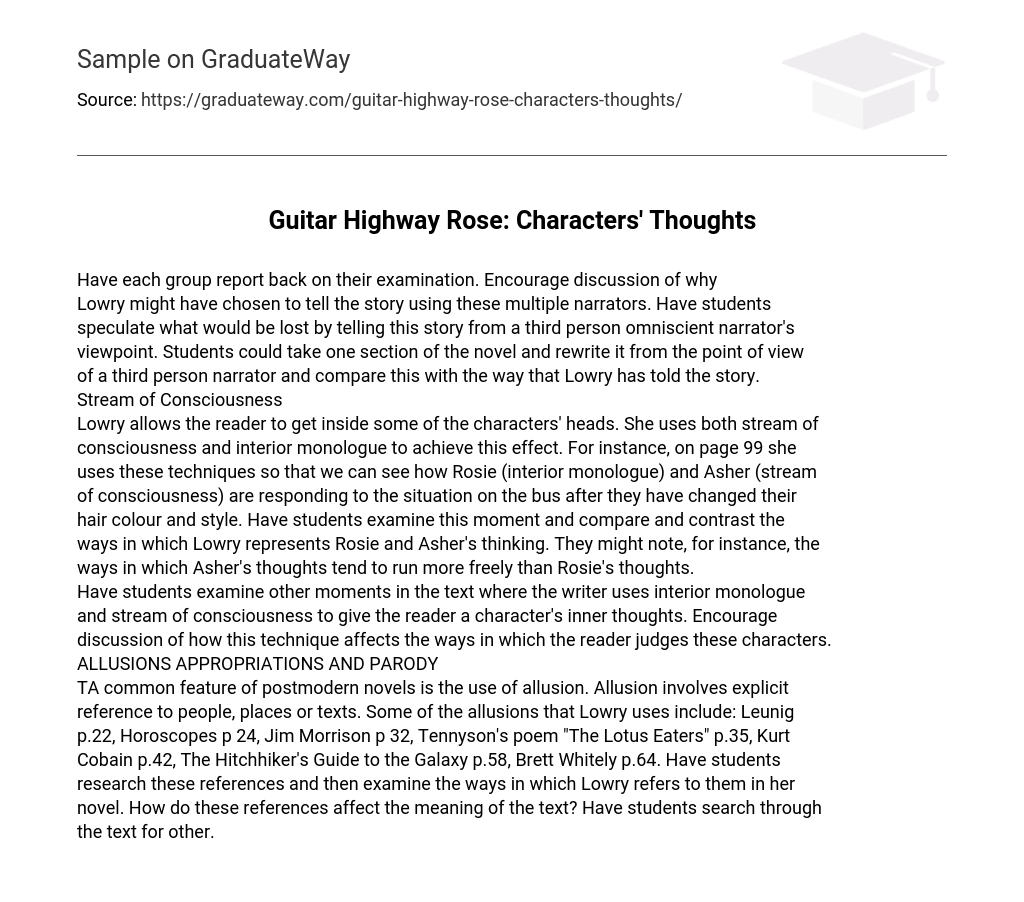Have each group report back on their examination. Encourage discussion of why Lowry might have chosen to tell the story using these multiple narrators. Have students speculate what would be lost by telling this story from a third person omniscient narrator’s viewpoint. Students could take one section of the novel and rewrite it from the point of view of a third person narrator and compare this with the way that Lowry has told the story. Stream of Consciousness Lowry allows the reader to get inside some of the characters’ heads.
She uses both stream of consciousness and interior monologue to achieve this effect. For instance, on page 99 she uses these techniques so that we can see how Rosie (interior monologue) and Asher (stream of consciousness) are responding to the situation on the bus after they have changed their hair colour and style. Have students examine this moment and compare and contrast the ways in which Lowry represents Rosie and Asher’s thinking. They might note, for instance, the ways in which Asher’s thoughts tend to run more freely than Rosie’s thoughts.
Have students examine other moments in the text where the writer uses interior monologue and stream of consciousness to give the reader a character’s inner thoughts. Encourage discussion of how this technique affects the ways in which the reader judges these characters. ALLUSIONS APPROPRIATIONS AND PARODY TA common feature of postmodern novels is the use of allusion. Allusion involves explicit reference to people, places or texts. Some of the allusions that Lowry uses include: Leunig p.22, Horoscopes p 24, Jim Morrison p 32, Tennyson’s poem “The Lotus Eaters” p.35, Kurt Cobain p.42, The Hitchhiker’s Guide to the Galaxy p.58, Brett Whitely p.64. Have students research these references and then examine the ways in which Lowry refers to them in her novel.
How do these references affect the meaning of the text? Have students search through the text for other.





